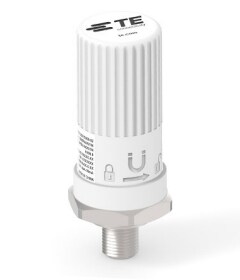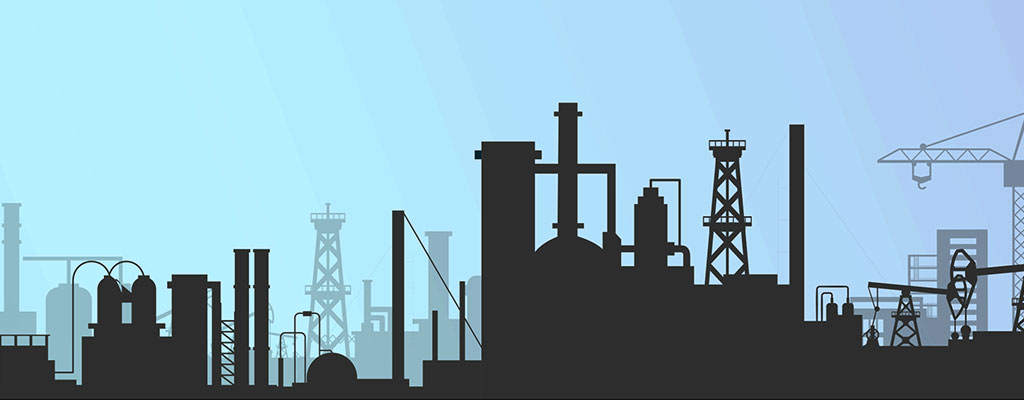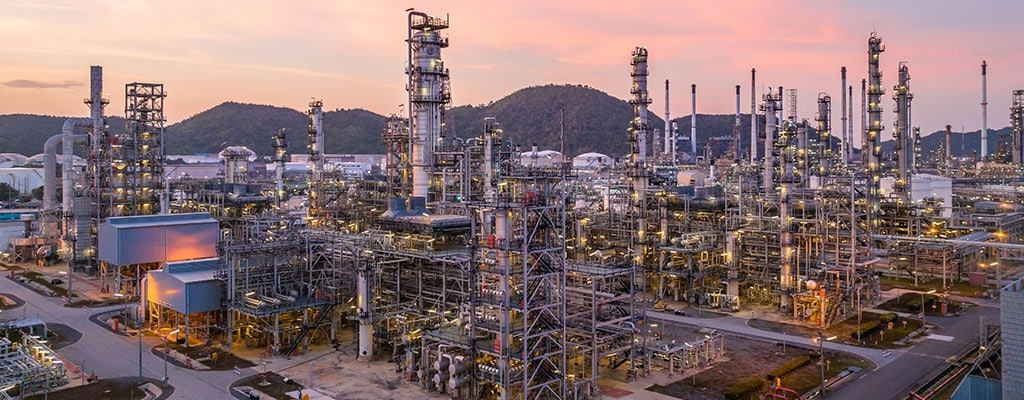
Application
Sensors in Industrial Process Automation
Precision manufacturing relies heavily on industrial process automation to provide continuous operation while helping to decrease risk of injuries.
As manufacturing processes increase in complexity, more checks and balances are needed to keep them running smoothly. Factories, power plants, mills, and refineries are just some of the facilities that rely on sensors to automate their work processes. Where periodic safety and quality checks were previously performed manually, sensors can provide a constant stream of data regarding the temperature of a liquid, the pressure and flow in a pipe, or the fill level of a tank. In large facilities, what was once a lengthy walk to each checkpoint is now a single glance at a screen to view data in real time. Process automation not only improves data and saves labor but can also decrease risk by minimizing human exposure to raw materials and by minimizing wear on seals and valves.
Almost any measurable condition can be tracked with sensors, creating a web of data that can help predict failure, improve efficiency, and maintain order. By detecting and processing conditions instantly and continuously, sensors can create levels of precision and uniformity that are not possible through manual labor alone.
Aerospace and defense, medical devices and pharmaceuticals, and semiconductor manufacturing all take place in heavily controlled environments to prevent defects. Sensing devices placed throughout a production run are used to immediately flag any deviation, which can ruin an entire batch if not identified and corrected.
Repetitive tasks have been common in manufacturing since the invention of the assembly line, but sensors refine this work even further through their ability to provide instant feedback. Automated tasks run at speeds far beyond human capability, without fatigue or distraction, while pressure and position sensors maintain tight control over production specifications. Custom processes like batch automation can be tracked for cost variance, while serialized lots can be traced to meet regulatory guidelines.
Presence Detection
Process automation relies heavily on presence detection to operate efficiently. When a target object enters a field of detection, sensors respond by delivering signals to create an action. This may cause the system to log data, change equipment behavior, or flag for human intervention. On a production line, pressure or position sensors can be used to automate counting with high accuracy and high speed. For more sophisticated uses, magnetic and other proximity sensors can be combined to detect a wide range of materials. This enables quality control by verifying that all components making up a manufactured product are present and positioned correctly before final inspection and packaging. If the rate of “passing” items drops, inspectors can quickly examine the process to determine the root cause of the defect, reducing waste and improving efficiency.
The customizable nature of these systems means that new information can be quickly fed back in, providing responsiveness to defined requirements. For example, complaints of loose parts may cause production teams to create additional checks to hardware, verifying that screws are fully tightened. Adjusting sensitivity can also help with quality control, either by increasing sensitivity to identify defects and contaminants that would be missed by the human eye, or by decreasing sensitivity to ignore dust and fine particles that create false positives. Input from multiple sensors can be used to create complex interlocks, preventing equipment from acting unless several position parameters are met simultaneously.
Optical and pressure sensors can be combined for inventory tracking, allowing automated monitoring of materials and parts in specific storage areas. By flagging the system when stock runs low, companies can maintain consistent deliveries without overbuying or running out. Over time, historical records can show macro trends to develop more accurate demand forecasting. This is particularly useful for industries that rely on raw materials with a limited shelf life or delicate storage requirements, such as pharmaceuticals or microelectronics.
Safety and Security
Automation plays a major role in safety and security, protecting both people and assets. Sensors are used to prevent accidents and injuries, to control and detect location access, and to safeguard valuable equipment and intellectual property. Integrating IIoT with cameras and artificial intelligence can further enhance these features, making safety and security systems predictive and instantly responsive. For example, motion sensors and video feeds can determine the difference between regular human movement and a fall, triggering an emergency stop to avoid injury.
While regular inspection is an important part of an industrial safety program, unexpected component failure is still possible. Vibration and temperature sensors can detect minute changes, imperceptible to the eye, that signal the beginning stages of breakdown. Combined with historical data, these sensor alerts can allow system managers to schedule planned outages at convenient times, repairing or replacing only needed parts and thereby streamlining cost and inventory. Further, vibration sensors can also detect movement or sound that indicates tampering or vandalism, such as drilling or prying of equipment.
Pressure sensors are used in safety mats and safety edges, protecting employees from crush, shear, and pinch points created by automated equipment. When sufficient pressure is applied to the surface of these sensors, two conductive plates make contact to complete a circuit. The resulting electrical signal triggers a safety action. Safety mats are floor coverings used to guard a specific perimeter around a machine, ceasing operation if someone enters the hazard zone. Safety edges are flexible strips mounted directly on moving parts of a machine, designed to stop or reverse motion upon impact. These are best used for specific linear hazards, such as powered gates or robotic arms.
Used with emergency stop (e-stop) buttons, proximity and optical sensors can monitor for unauthorized bypass or tampering. This confirms that staff adheres to appropriate lockout/tagout procedures, while also allowing workers to intentionally trigger immediate machine stop in an emergency. Safety interlock switches use similar automation sensors to prevent access to guarded areas while equipment is running, providing immediate stop if safety mechanisms are lifted or opened. For precision security needs, tamper detection sensors are used to detect the breach of a physical perimeter around a defined asset. A custom multi-layered laminate is wrapped or folded around the asset, which alerts upon physical or chemical disruption. Any attempts to remove, bypass, or alter the sensor are recorded. These sensors are critical for industries that handle sensitive data, as well as for control systems that maintain public utilities and other essential services.
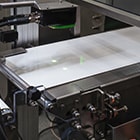
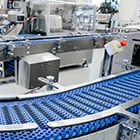

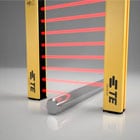
Light curtains are safety devices that use one transmitter and one receiver to create a virtual barrier made of light. Calibrated for fingers, hands, or full bodies, they detect interruption of the beam and respond by triggering an alarm or by stopping the connected equipment. Because they sense but do not physically block movement, they do not impede access, affect ergonomics, or block visual inspection. Light curtains are used when human intervention is frequent or necessary but must be performed with caution. Any automated process that involves high speeds, intense pressure, cutting hazards, or pinch points may benefit from light curtains. Common applications include presses and stamping machines, material handling and logistics, robotic work cells, and automotive assembly lines. Light curtains may also monitor employee or customer traffic in order to adhere to occupancy limits per fire code, or to make adjustments to specialized environmental conditions. For security purposes, light curtains can monitor thresholds to log access, or to warn of unauthorized entry or exit.
Motion sensors, in particular position and traffic sensors, are used to track activity in restricted areas. Foot traffic, forklifts, and automated guided vehicles (AGVs) are logged and analyzed to create flow maps. This data is used to create traffic management systems that optimize routes and prevent collisions, enabling both employee safety and machine integrity. A streamlined workflow not only prevents injury and improves logistics but can also minimize wear on specialized equipment by determining the minimum necessary travel for use. Further, motion sensors can alert site managers to unauthorized access of specific locations, protecting both physical and data assets from bad actors.
Environmental Compliance
While employee and equipment protection are often the highest priority, environmental protection is another category in which industrial automation is highly effective. Fluid and pressure sensors provide real-time data that detects abnormal chemistry, protects system integrity, and confirms compliance with environmental regulations. Fluid sensors can monitor the composition and flow inside tanks and pipes, maintaining the parameters needed for effective treatment and maintenance of hazardous or corrosive liquids. Pressure sensors maintain vessel structure by alerting to unexpected low or high pressure that could signal leaks or imminent burst. Because potential spills could contaminate soil and groundwater, early detection is critical to mitigating scope and facilitating recovery. In addition, sensor use can minimize the need for manual testing, thus exposing personnel to hazardous fluids less frequently.
FEATURED APPLICATIONS

Industrial Automation
Industrial HVAC
Sensors are an integral part in helping to maintain HVAC and refrigeration systems.

Industrial Automation
Cobots & Robotics
As the need for industrial robotic automation continues to advance, sensing technology will continue to be the foundation for data collection.

Industrial Automation
Condition Monitoring
Predictive maintenance sensors help anticipate machine failures, increase productivity, lower maintenance costs, and improve worker safety.
